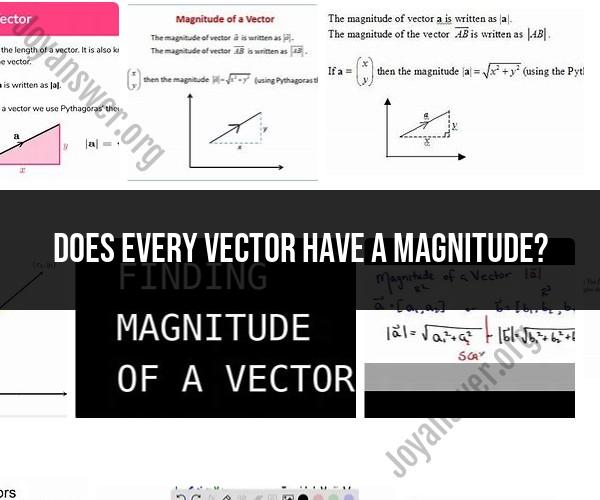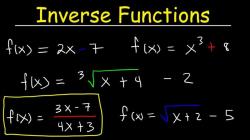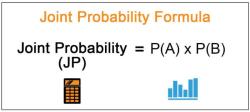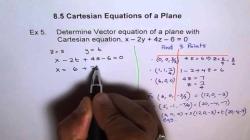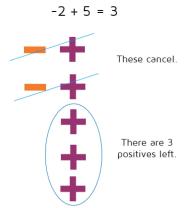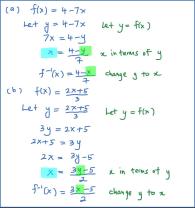Does every vector have a magnitude?
Yes, every vector has a magnitude. In mathematics and physics, a vector is a mathematical object that has both magnitude (length) and direction. The magnitude of a vector represents the size or length of the vector, while the direction indicates where the vector is pointing.
For example, consider a vector representing the velocity of an object moving in a straight line. The magnitude of this velocity vector tells you how fast the object is moving, and the direction indicates whether it's moving to the right, left, up, down, or along any other specific direction.
In a three-dimensional space, vectors are often represented as arrows, where the length of the arrow represents the magnitude, and the direction in which the arrow points indicates the direction of the vector.
The magnitude of a vector is a scalar quantity, which means it has a numerical value but no specific direction. It is usually denoted by double bars or absolute value symbols around the vector's name. For example, if you have a vector "v," its magnitude is denoted as ||v||.
To calculate the magnitude of a vector, you can use the Pythagorean theorem in two or three dimensions, depending on the context:
- In two dimensions: If you have a vector with components (a, b), the magnitude is given by ||v|| = √(a^2 + b^2).
- In three dimensions: If you have a vector with components (a, b, c), the magnitude is given by ||v|| = √(a^2 + b^2 + c^2).
So, to summarize, every vector has both magnitude and direction, and the magnitude represents the length or size of the vector. Calculating the magnitude is an important step when working with vectors in various mathematical and physical applications.
Magnitude in Vectors: Understanding its Universality
The magnitude of a vector is a non-negative scalar quantity that represents the length or size of the vector. It is a fundamental characteristic of all vectors, regardless of their direction.
The magnitude of a vector can be calculated using the following formula:
|v| = sqrt(v1^2 + v2^2 + ... + vn^2)
where:
- |v| is the magnitude of the vector v
- v1, v2, ..., vn are the components of the vector v
For example, the magnitude of the vector (1, 2, 3) is equal to sqrt(1^2 + 2^2 + 3^2) = sqrt(14).
The magnitude of a vector has a number of important properties, including:
- The magnitude of a vector is always non-negative.
- The magnitude of a zero vector is equal to zero.
- The magnitude of a scalar multiple of a vector is equal to the absolute value of the scalar multiplied by the magnitude of the vector.
- The magnitude of a sum of two vectors is less than or equal to the sum of the magnitudes of the two vectors.
These properties make the magnitude of a vector a very useful quantity in mathematics and physics.
Vector Properties: Does Every Vector Possess Magnitude?
Yes, every vector possesses a magnitude. The magnitude of a vector is a scalar quantity that represents the length or size of the vector, and it is a fundamental characteristic of all vectors.
Even the zero vector, which has no direction, has a magnitude of zero. This is because the zero vector can be thought of as a vector with zero length.
The Magnitude of Vectors: A Fundamental Characteristic
The magnitude of a vector is a fundamental characteristic of all vectors because it allows us to compare the sizes of different vectors, even if they have different directions.
For example, we can say that the vector (1, 2, 3) is larger than the vector (0.5, 1, 1.5) because it has a larger magnitude.
The magnitude of a vector is also used in many important mathematical and physical equations. For example, the magnitude of a force is used to calculate the work done by the force, and the magnitude of a velocity is used to calculate the kinetic energy of an object.
In conclusion, the magnitude of a vector is a fundamental characteristic of all vectors that is used to compare the sizes of different vectors and to calculate important mathematical and physical quantities.
